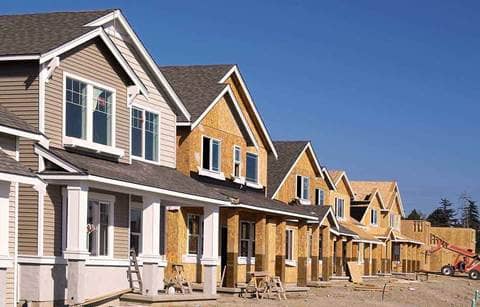A sense of urgency has permeated the senior living industry. Supply and demand projections suggest that reduced construction rates are leading to a significant shortage of senior housing units* relative to the expected demand. Demographic growth and continuing construction cost and project financing challenges will only broaden the gap between supply and demand.
Recovery in occupancy
According to Plante Moran Living Forward’s analyses of data from NIC MAP Data Vision, occupied senior housing units are at an all-time high since NIC began tracking the top 140 markets (metropolitan statistical areas or MSAs) in the first quarter of 2015. See Figure 1 below. Occupancy across all care levels has continued to increase as well, although average occupancy among the primary and secondary markets tracked by NIC MAP is still 1% below pre-pandemic levels.

Improvements in occupied units and occupancy are usually positive signs for the industry. But when compared with the volume of seniors aging into senior living, they signal an imminent strain on existing inventory.
Baby Boomer generation expected to strain existing housing inventory
The strong demand for senior housing is expected to continue as Baby Boomers age into the 80+ cohort. The first Baby Boomers will turn 80 in 2026. From 2020 to 2040, the 80+ population in the United States will more than double, from 13 million to 27 million. See Figure 2 below.

At the pace the industry is developing new units, we’re likely already behind on development to meet the needs of this generation.
Units under construction and construction vs. inventory at all-time lows
Construction flagged during the pandemic, and with the cost of capital and the cost of construction remaining elevated, a lot of the industry’s construction remains delayed.
While occupied units have hit record highs, senior housing units under construction, and the related metric construction as a percentage of inventory, are hitting record lows. At the end of the first quarter of 2024, about 43,800 units were under construction across the top 140 markets in the United States — only 3.8% of the current inventory. See Figures 3 and 4 below.

Plante Moran Living Forward’s analysis of industry supply and demand data highlights how concerning these trends are to long-term outlooks.
From 2023 to 2040, the average annual growth in 80+ population is projected to be 4%. Over the last two years, the average annual growth in supply has only been 1.4%, adding about 16,000 units annually. See Figure 5 below.

If the senior housing industry maintains its existing penetration rate and pace of inventory growth, inventory will not be able to meet demand. Providers need to develop 51,000 units per year instead of 16,000 units per year to keep pace.
Figure 6 below illustrates this shortfall. The solid lines are actual data for the 140 markets tracked by NIC Map Data Vision. The dotted lines offer projections based on the following criteria:
- Projected Demand: Applies the 2023 penetration rate for each of the top 140 markets (defined as occupied senior housing units divided by 80+ population) to the projected 2030 and 2040 80+ population. The average penetration rate in 2023 is 10.2%.
- Projected Supply: Assumes a 1.5% annual growth rate in supply based on the rounded average annual supply growth over the past two years.

The graph shows demand outpacing supply by 2030, with the gap widening in the following decade. However, this demand projection assumes the 2023 penetration rate remains the same into the future.
Future penetration rates could decrease due to factors such as:
- Baby Boomers rejecting the senior housing product
- A rise in the average move-in age due to improved health and more alternatives (i.e., home health, technology)
- New drugs and treatments that would combat the effects of major diseases
- The affordability factor making senior living out of reach for many seniors
- Persisting staffing issues
Future penetration rates could increase due to factors such as:
- The decreasing ratio of adult children to seniors (resulting in less informal support and care and more seniors seeking senior living)
- Growth in the prevalence of Alzheimer’s, other forms of dementia, diabetes, and other health conditions as the senior population grows
- Payor sources, the government, and consumers shifting care out of nursing homes into other senior housing alternatives
A tale of two sectors: for-profit vs. not-for-profit
If the current rate of development is any indicator, the sense of urgency to fill this gap is missing in not-for-profit senior care providers. For-profit providers, who represent 73% of the existing senior housing units in the top 140 MSAs, are currently out-developing not-for-profits 8:1. See Figure 7. In addition, they are more likely to offer new products over renovating old: 90% of for-profit development is new construction while 67% of not-for-profit development is expansion.

These trends should act as a wake-up call — there is untold opportunity in the industry, but only if providers are willing to take risks and position themselves for growth.
Planning for growth
The cost of capital and construction both remain high, hindering many providers’ ability to plan for development. Providers, particularly not-for-profits, need to employ a disciplined process to development if they wish to grow. Leaders should look at their future products as both financially feasible and marketable to the incoming cohort, who may not have the resources to pay for all the bells and whistles but who have specific preferences for housing and care.
Our development advisors recommend a process that aligns your strategy, operations, and facilities:
- Assess your organization’s health and identify opportunities. A holistic assessment of these four areas is foundational to a strategic plan: market, facilities, operations, and finances. Missing any one piece can jeopardize your planning.
- Develop a strategic plan with actional initiatives, clear objectives and outcome measures, and defined action plans and process measures. This plan should be supported by data and tools that allow you to align your operations to your strategy.
- Test the feasibility of any new development plans carefully. Look at more than the time until stabilization. Also account for the opportunity costs associated with repositioning existing assets and the long-term cost of ownership.
- Get the right team on board to help define and manage your development plans. Construction in today’s market can take two years or more, and without a development advisor, that time frame can lengthen significantly.
- Create a master plan as the road map to stabilization or transformation, which defines what to build or renovate, where new products should go, and how that growth will be phased out.
- Leverage your development advisor to develop a disciplined project management process that will mitigate risks and challenges, reduce the management and technical burden on your internal teams, and confirm your project is constructed to your specifications.
Next steps for the industry
The Baby Boomer generation’s entrance into senior housing is expected to strain existing supply and outpace the rate of new development. As an industry, more development will be needed to address this burgeoning demand for senior housing. Providers should start planning now with their development advisor so that when interest rates and the cost of construction come down they can move quickly.
This call to action is especially important for nonprofits. Not-for-profit providers are lagging behind their for-profit counterparts when it comes to construction. Not-for-profit leaders should challenge their boards to be bold; consider new campuses and not just expansions.
Once new development ramps up, existing units will be competing with the new product entering the market. According to NIC MAP data, nearly 44% of senior housing inventory is now more than 25 years old. Part of your total construction budget needs to be allocated to updating existing product as well.
Finally, plan projects that are accretive to the organization. Carefully calculate the feasibility of your plans to allow for sustainable growth over the long term. Despite the urgency, remember that your organization’s financial health should guide your strategic choices. Growth should never come at the expense of sustainability. The key is striking a balance between development and sustainability.
If you’d like help thinking through your growth plan, reach out to our development advisors here.
But in the meantime, if you liked this article, consider signing up for our newsletter.





